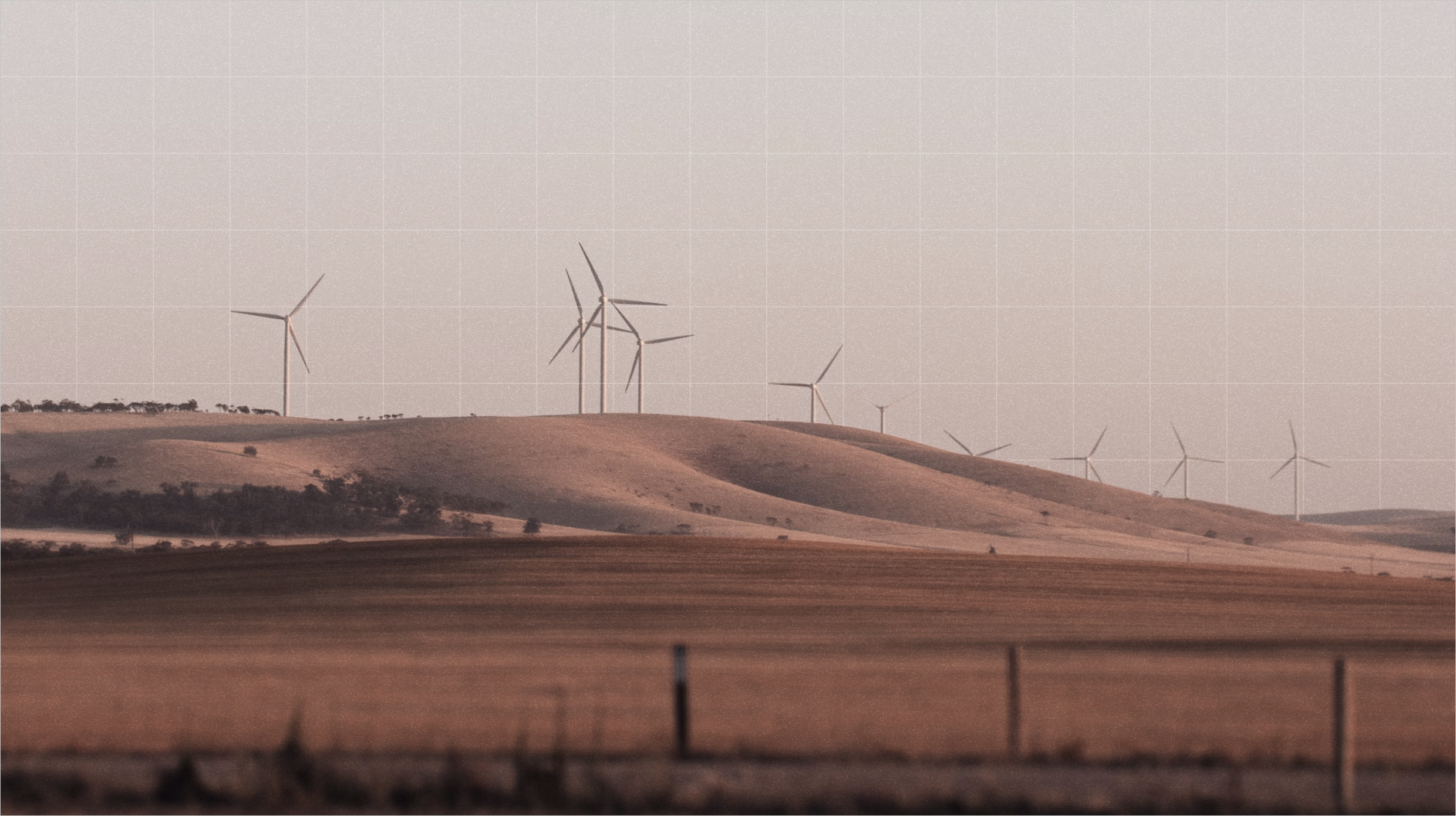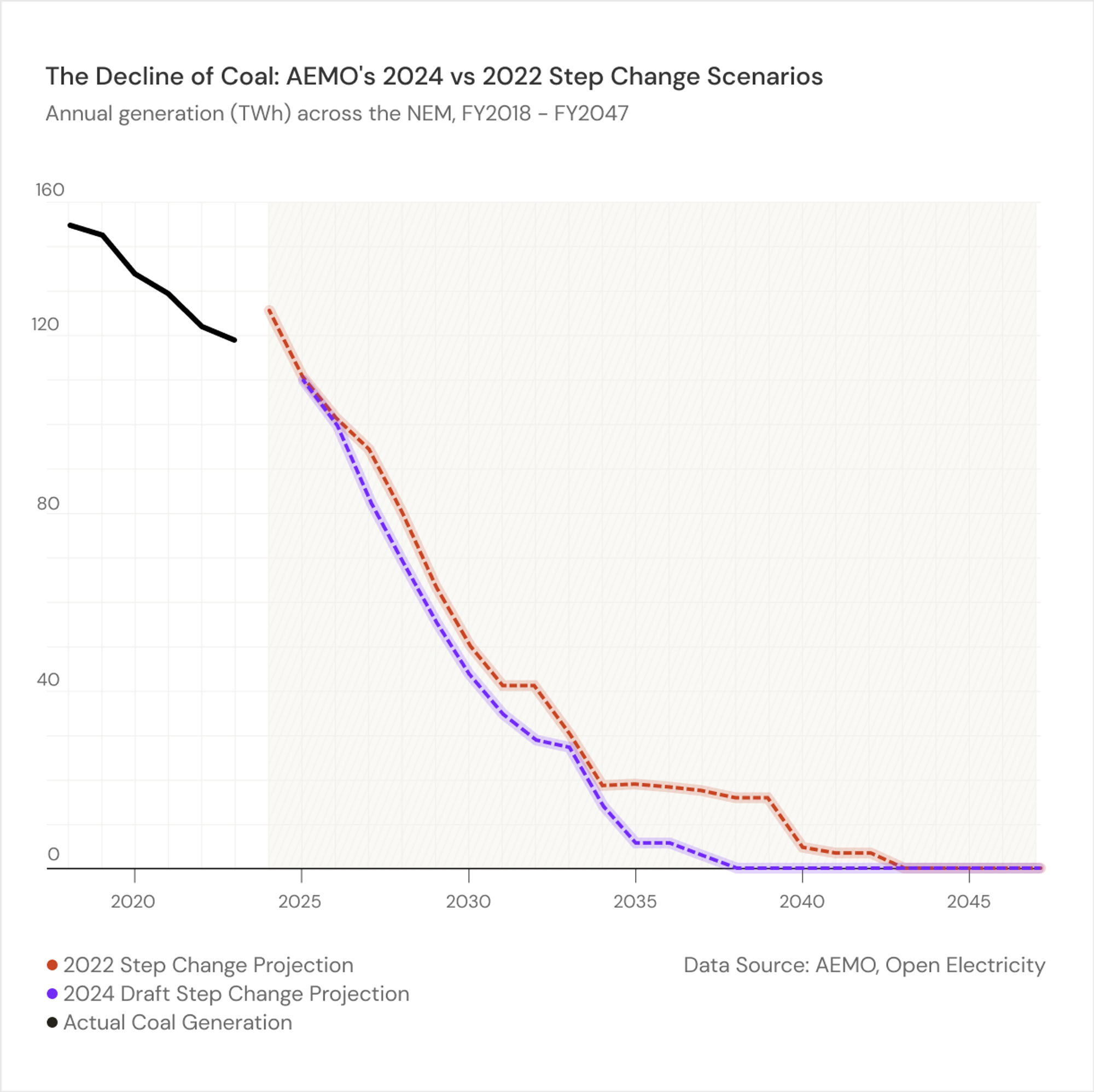Seeing into the future of Australia’s Electricity Market

AEMO’s latest energy roadmap outlines possible paths for Australia's energy transition over the next 20 years.

Australia’s coal power stations will all close by 2038 – five years earlier than previously expected – and variable renewable energy capacity will need to triple by 2030 and increase sevenfold by 2050.
These are two key findings for the central scenario in the latest roadmap for Australia’s largest grid and electricity market, the National Electricity Market. The draft of a document known as the 2024 Integrated System Plan (ISP) was released in late 2023 by the Australian Energy Market Operator (AEMO). It lays out detailed projections for the next 20 years as we wean ourselves off coal and embrace renewables firmed by storage.
An interactive visualisation of AEMO’s projections are being presented for the first time on Open Electricity, a contribution we hope will aid the public debate and discussion around the future of our electricity market, and demystify some of the decisions made downstream of AEMO’s analysis.
What is the Integrated System Plan, and why does it matter?
AEMO ensures our energy market runs smoothly, and also plans for the needs of the future, particularly transmission – that’s where the ISP comes in.
Australia’s main grid has historically been based on connecting cheap but polluting coal plants to large cities, powering largely passive loads. As coal plants retire, we need a different grid, drawing renewable power from many different locations, while utilising storage to smartly power more flexible loads.
Every two years, AEMO releases an updated plan, drawing on detailed modelling and consultation across the energy sector.
Through this process, it arrives at an “optimal development path”. That’s energy-speak for the most cost effective development of transmission projects that is best able to meet our reliability and security needs while also supporting government emissions reduction policies, across a range of plausible scenarios.
Changes to our national electricity laws to include emissions reductions in its objectives came into effect in November 2023. In response, AEMO is now only using scenarios in line with Australian Governments’ emissions reductions targets.
The optimal path laid out in this latest plan is intended to ensure the energy transition already underway will be lower cost and reliable. Importantly, the plan points to where we will need to build important new infrastructure – especially transmission lines – to deliver the electricity system.
What does the 2024 update tell us?
The 2024 plan explores three possible scenarios:
- Step Change, which meets Australia’s emissions reductions commitments in a growing economy
- Progressive Change, reflecting slower economic growth and energy investment
- Green Energy Exports, framed around very strong industrial decarbonisation and surging low-emission energy exports
A panel of experts suggests the Step Change scenario is the most likely of these three, closely followed by progressive change.

What would we see under the Step Change scenario? Change – and plenty of it. This scenario forecasts the retirement of 90% of Australia’s remaining 21 gigawatts of coal generation by 2034-35, with the entire fleet retired by 2038. This timeframe is five years earlier than envisaged in the same scenario in the 2022 Integrated System Plan.
AEMO notes the departure of coal from the grid could be faster still, pointing to higher operating costs, reduced fuel security and high maintenance costs as well as more competition from renewable energy in the wholesale market.
To manage the departure of coal alongside increased electricity demand from population growth and electrification of transport, we will need to add about 6 GW of grid-scale renewable capacity every year in the coming decade, as well as a major increase in rooftop solar.

AEMO’s 2024 optimal development path suggests close to 10,000km of new transmission lines will be needed to deliver this least-cost system by 2050. This is slightly less transmission compared to the previous iteration, due to higher transmission costs, and more power from sources requiring less transmission.
The findings from the step change scenario also suggests a quadrupling of the grid’s firming capacity will be required to smooth out peaks and dips in renewable generation and reduce the chance of energy shortages for consumers. This is projected to come from grid-scale batteries, pumped hydro, coordinated consumer batteries used as virtual power plants, and gas-powered generation.
Other pathways and the role of open data
The evolution of the energy system is underway, with the ultimate destination still unknown. Multiple pathways that ensure a reliable and decarbonised NEM are possible. Through the new Open Electricity visualisations, we aim to give users the ability to explore and understand these various futures.
By offering straightforward access to the NEM’s data, past and present, as well as AEMO’s modelling for its future, Open Electricity aims to foster informed discussions and greater public involvement in the energy landscape.
The original version of this article was published in The Conversation under Creative Commons Attribution-NoDerivatives 4.0 International (CC BY-ND 4.0). It has been amended here with permission from the author.

